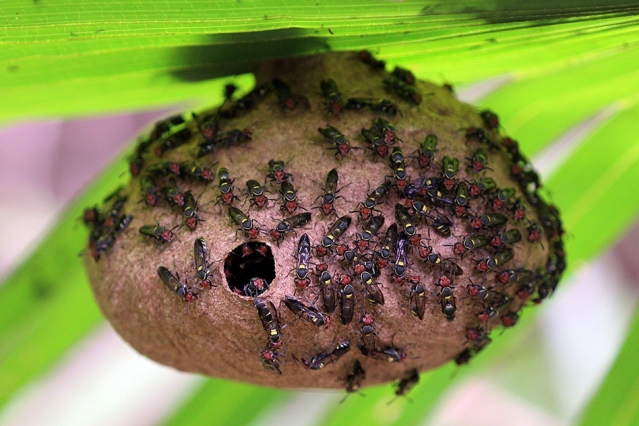Insects like wasps and bees produce venom that is capable of killing bacteria but most of the compounds also happen to be toxic to humans, which has not allowed us to use the venom for its antibiotic properties. Until now, that is.
Researchers at MIT have studied the antimicrobial properties of a toxin found in the South American wasp and managed to create variants of the venom which works against bacteria but is otherwise not too toxic for humans.
Their focus was on Pseudomonas aeruginosa, a bacteria present everywhere. It’s responsible for skin infections in burn victims, for example and it has, in time, managed to mutate into acquiring more resistant genes. Thanks to its complex cellular structure that practically shields it from outside factors, it’s immune to most antibiotics.
Many organisms, including humans, produce peptides that can kill bacteria as peptides are a part of their immune defenses. The peptides of the wasp Polybia paulista are what the MIT researchers decided to work on in order to develop an antibiotic.
The peptide has only 12 amino acids out of which the researchers created variants which they put to the test in order to figure out which one of them would be more potent against the microbes while at the same time be non toxic to humans.
The researches used mice to study the peptides and found that the strongest one they had was able to completely eliminate Pseudomonas aeruginosa by “repurposing a toxic molecule into one that is a viable molecule to treat infections” according to Cesar de la Fuente-Nunez, an MIT postdoc “By systematically analyzing the structure and function of these peptides, we’ve been able to tune their properties and activity.”
After registering success during those tests, the researchers now plan to create other variants of the peptide which will, hopefully, manage to clear infections with lower doses.
Follow TechTheLead on Google News to get the news first.






















